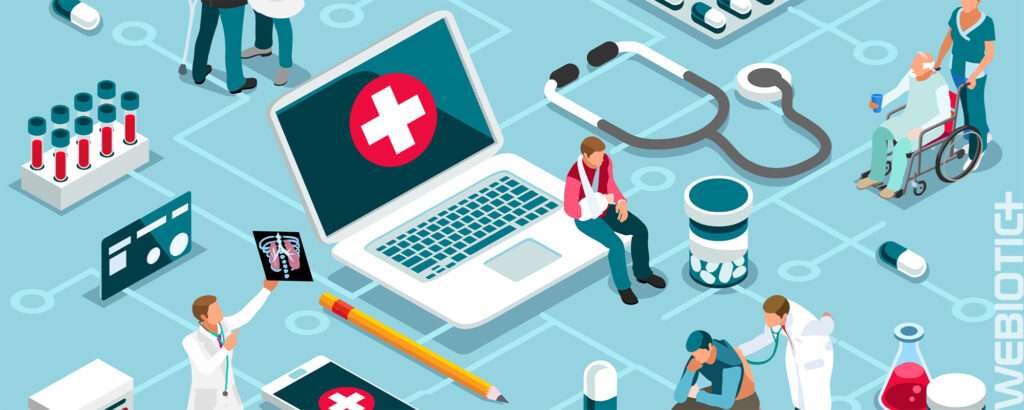
Virtually every industry is tapping into the mobile market to bring new and innovative solutions for users, and the healthcare industry is no different.
In fact, more and more people have come to rely on the remote services healthcare apps are offering during this COVID-19 reality we’re living in.
In this article, we’re going to take a look at how far healthcare mobile app development has come, what kind of technology new apps are leveraging, and how you can develop your own health app.
Table of Contents
- How Mobile Apps Are Transforming Healthcare
- Technology in Healthcare Apps
- Technology Trends in Mobile Health
- How Mobile Apps Are Benefiting Healthcare Businesses
- Top Mobile Apps Today
- Getting Started on Your Own Health App
- What Type of Health App Will You Build?
- What Functionality and Features Will You Offer?
- Conduct Research on Compliance and Privacy
- Ensure Your App’s UI/UX Design in Accessible
- Pick a Platform
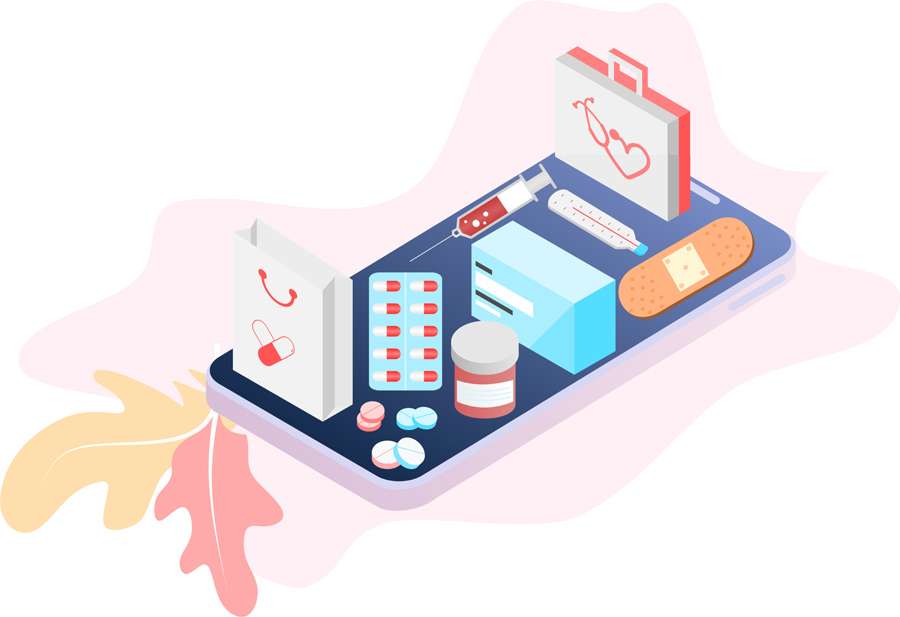
In today’s digital era, we’re embracing smartphone technology as a way of solving our problems.
It’s become an integral part of our lives which is constantly evolving as new technologies emerge.
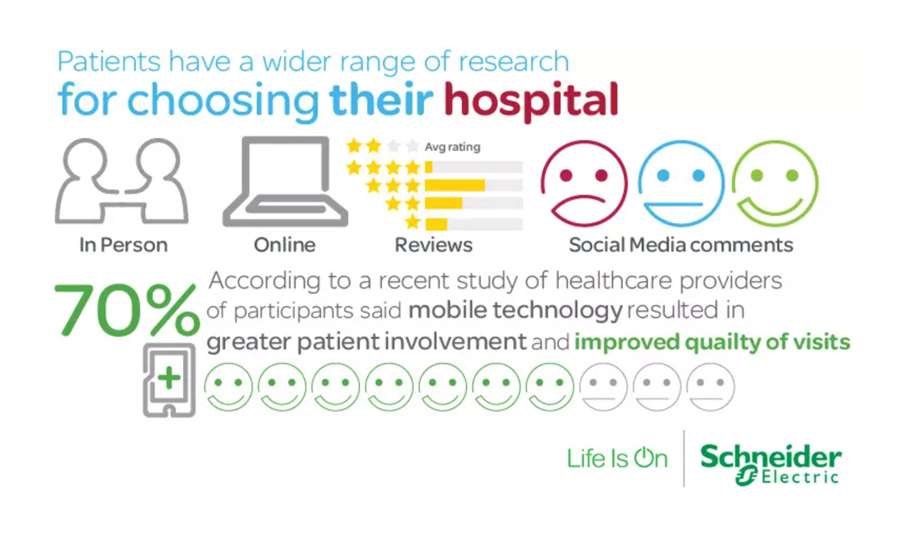
The healthcare mobile app industry in particular has seen steady growth over the years by offering a wealth of convenient services for both patients and health care physicians.
In fact, the mobile health market is expected to exceed $300 billion by 2025.
And due to the pandemic, health apps have seen a download increase of 25%.
In short, if you’re looking to tap into the mobile health market, you’re in a good place.
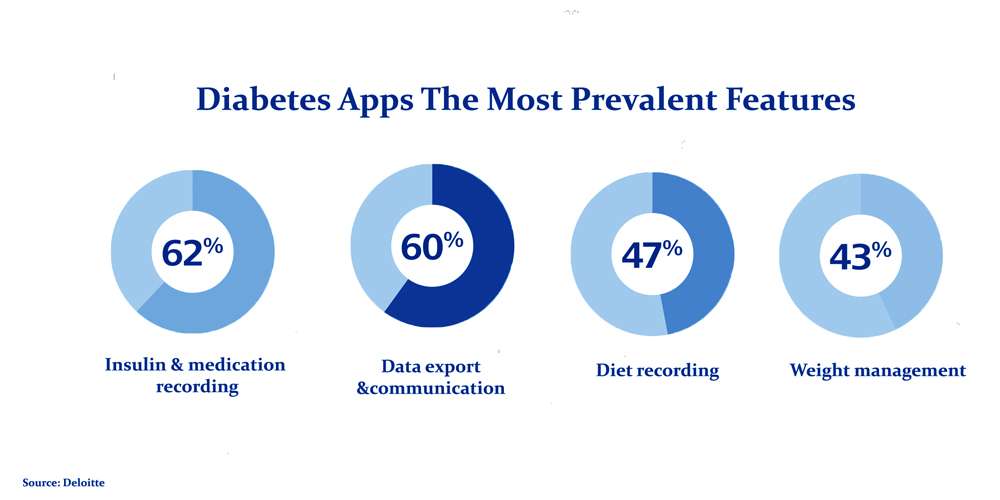
1.1 Technology in Healthcare Apps
So what can the technology in mobile health do?
Health apps can do quite a bit nowadays.
Health management apps can record, track, and collect data, like blood pressure, glucose levels, our physical activity, heart rate, and so much more.
Mobile technology is being used as a diagnostic tool. We can use our mobile devices to test for certain infections or diseases.
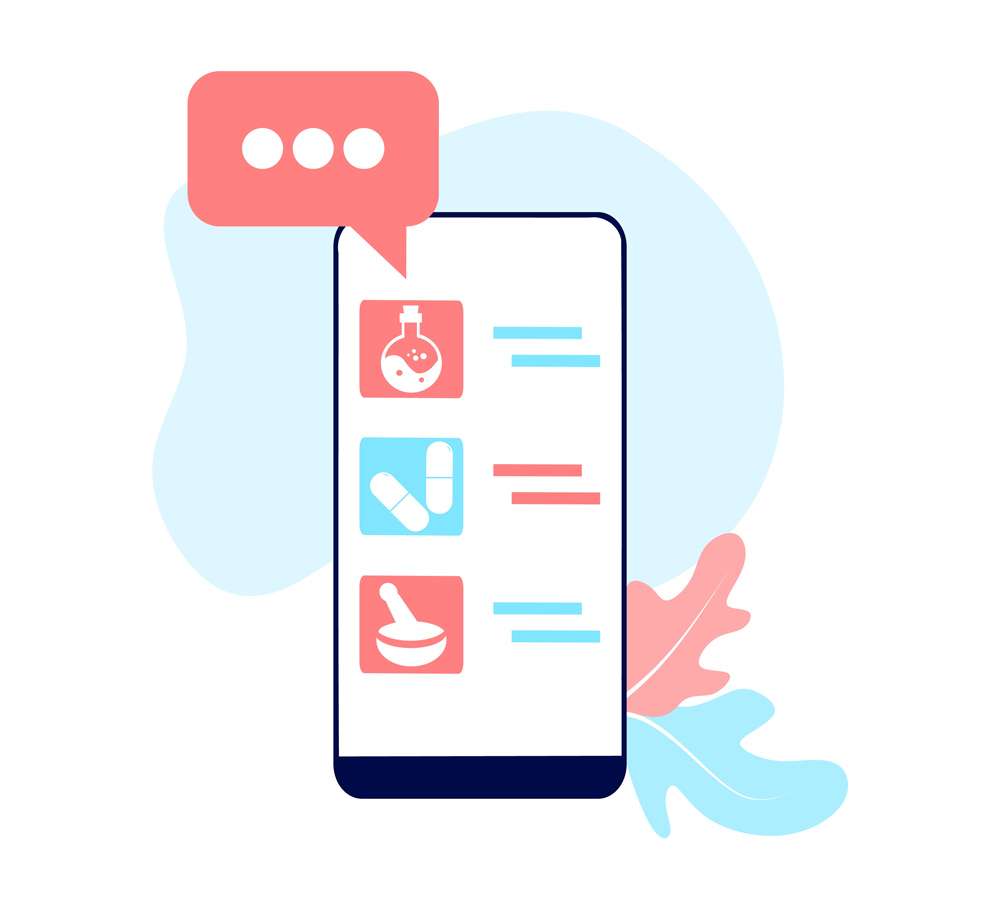
General health and wellness apps can help people maintain their exercise regimens and keep track of their nutrition intake and even sleep.
Telemedicine apps offer virtual patient care with their doctors, which has been especially helpful during the pandemic when individuals have been advised to stay home.
Mobile health apps are allowing individuals to lead happier, healthier lives using today’s technology.
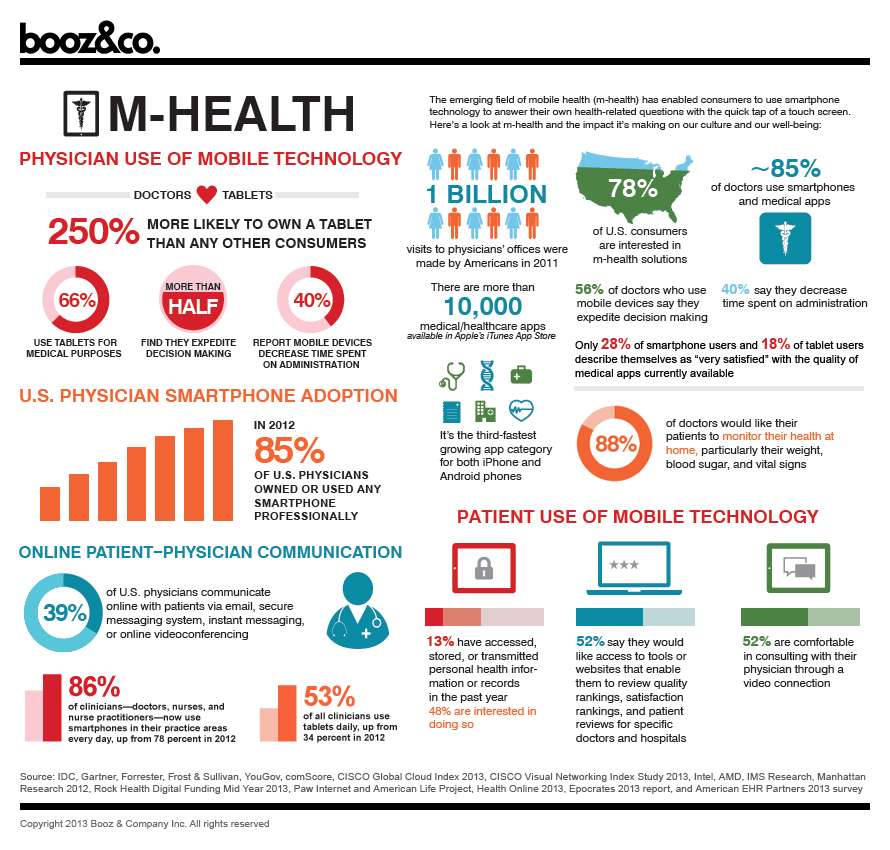
1.2 Technology Trends in Mobile Health
As mentioned in the previous section, telehealth has seen significant growth over the past year due to COVID-19.
Virtual doctor visits have increased, while in-person visits have decreased.
Over 43% of primary care visits in April 2020 were conducted through telehealth methods, and it’s no wonder why.
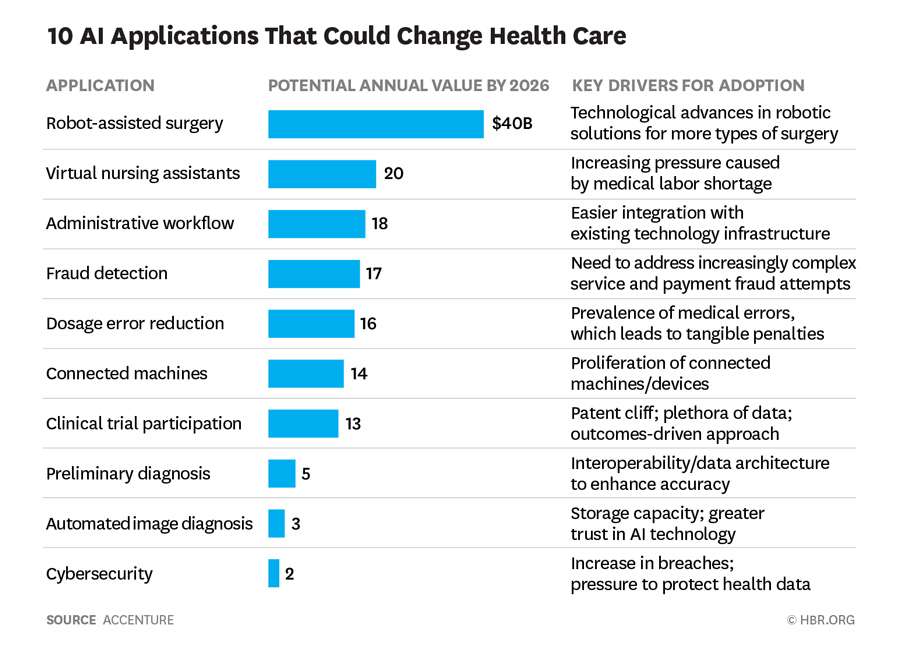
Telehealth reduces the contact between patients and healthcare workers.
Remote health services provide care in real-time and from the comfort of home, which is invaluable.
Artificial intelligence (AI) has also been trending during the pandemic and has been used for things like vaccine development, contact tracing, facial recognition with masks, thermal screening, and even analyzing CT scans.
While AI has been trending in the mobile app market, so too has virtual reality (VR) and augmented reality (AR).
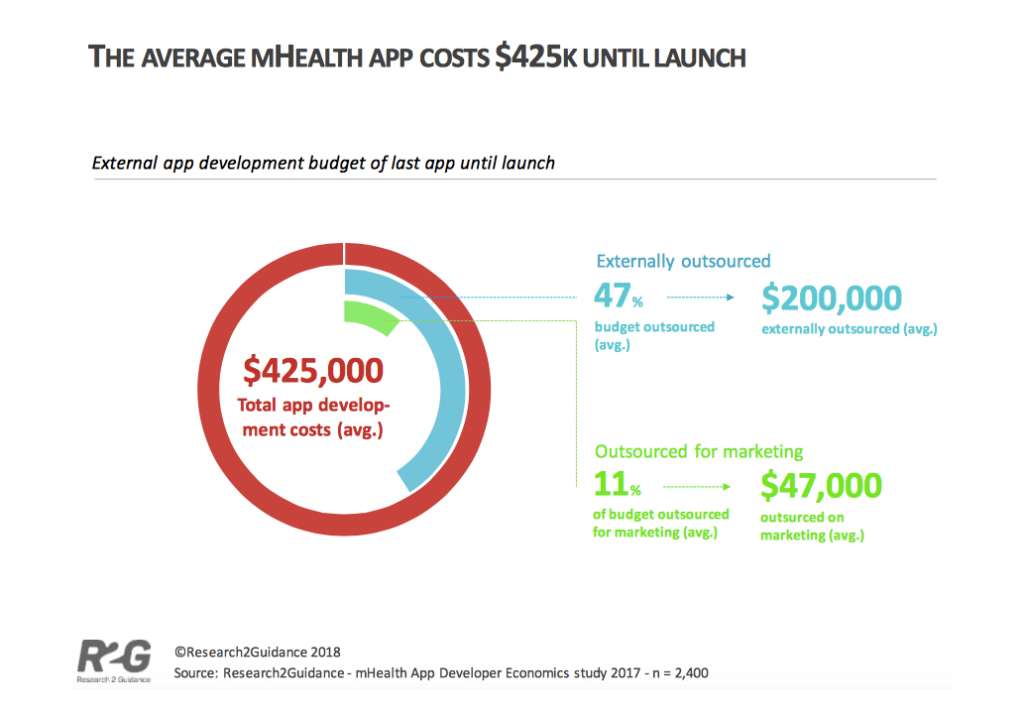
These technologies offer great potential in enhancing the quality of telehealth services, particularly during the pandemic.
It’s been used to help educate medical students and staff using simulations.
AR and VR have been used to enhance virtual visits between doctors and their patients.
VR headsets have even been used by individuals suffering from cognitive impairments, giving them access to various experiences and activities their current, physical environment cannot offer.
Healthcare Consumers Continue to Show Strong Use of Digital Technology
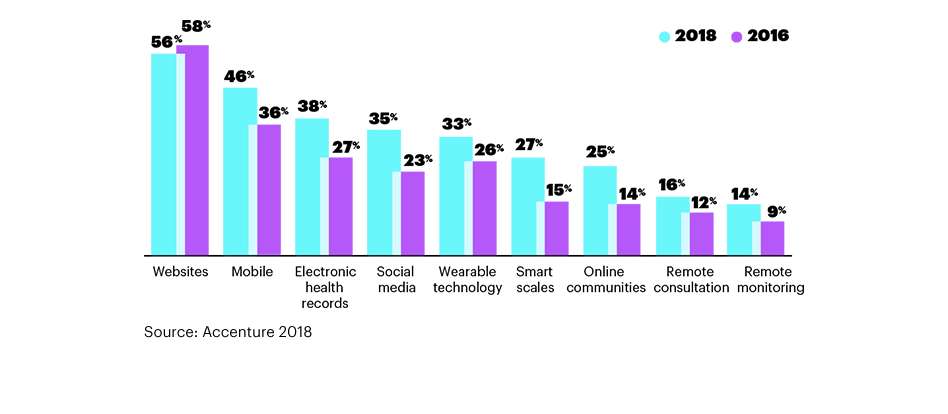
Blockchain is another trend in not just healthcare, but various industries.
These digital and decentralized ledgers allow healthcare providers to distribute transaction records securely.
As blockchain technology continues to advance, we’ll be seeing more improvements in security, portability, and accessibility in the mobile health industry.
1.3 How Mobile Apps Are Benefiting Healthcare Businesses
Both patients and healthcare workers are using their mobile devices for a variety of health-related services, so businesses have a lot to gain from creating a mobile app.
Having a mobile app can help facilitate faster access to healthcare, like online appointments.
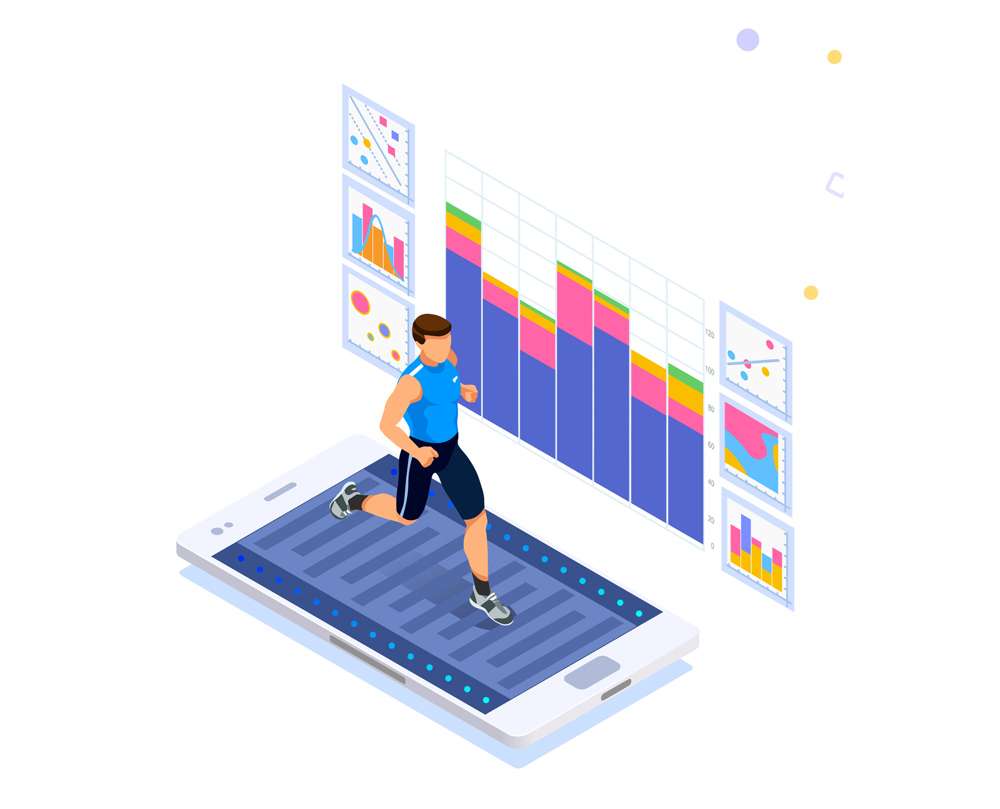
A mobile app can help handle emergency cases through alerts to physicians and notifications, saving them time and preparing them for emergencies.
Mobile apps integrate easily with wearables to collect valuable patient data.
Additionally, there’s so much you can do with the introduction of emerging technologies like AI, AR, and blockchain in apps.
PRO TIP:
Overall, having a mobile app is an excellent business opportunity that helps physicians, patients, and healthcare service providers by improving the user experience, which of course, will increase profits over time.
So we’ve reviewed some of the technology being used today in healthcare.
Now let’s take a look at the top apps in the mobile app market and how they’re using technology to improve the industry.
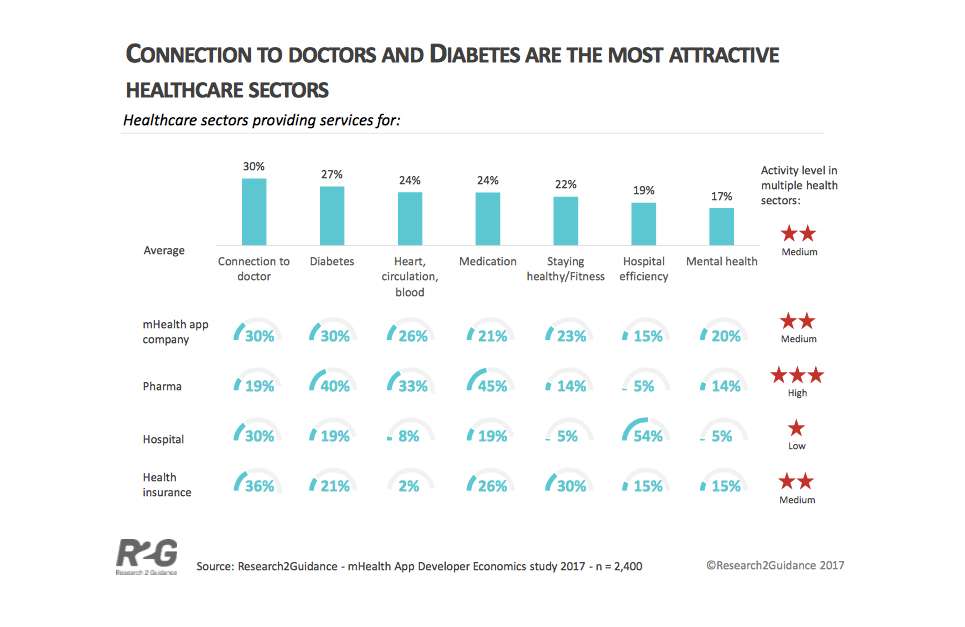
2.1 Teladoc
Teladoc is a healthcare company that provides telemedicine services through a mobile app.
With the Teladoc app, users can access a network of healthcare professionals, including doctors, therapists, and nutritionists, for consultations, diagnoses, and treatment.
Users can schedule appointments, have virtual visits with healthcare providers, and receive treatment recommendations through the app.
People are using this app in a variety of ways, such as:
- Getting a diagnosis and treatment for minor health issues: Users can consult with healthcare professionals about common health issues such as cold and flu, allergies, and skin conditions, and receive treatment recommendations.
- Accessing mental health care: Users can connect with therapists and other mental health professionals for counseling and therapy sessions through the app.
- Receiving follow-up care after a hospital visit: Users can have virtual visits with their healthcare providers to follow up on treatment plans and discuss any ongoing concerns.
- Getting a second opinion: Users can consult with healthcare professionals about specific health issues or treatment options and receive additional perspectives and recommendations.
Overall, the Teladoc app gives users convenient and accessible healthcare services that can be accessed from anywhere with an internet connection.
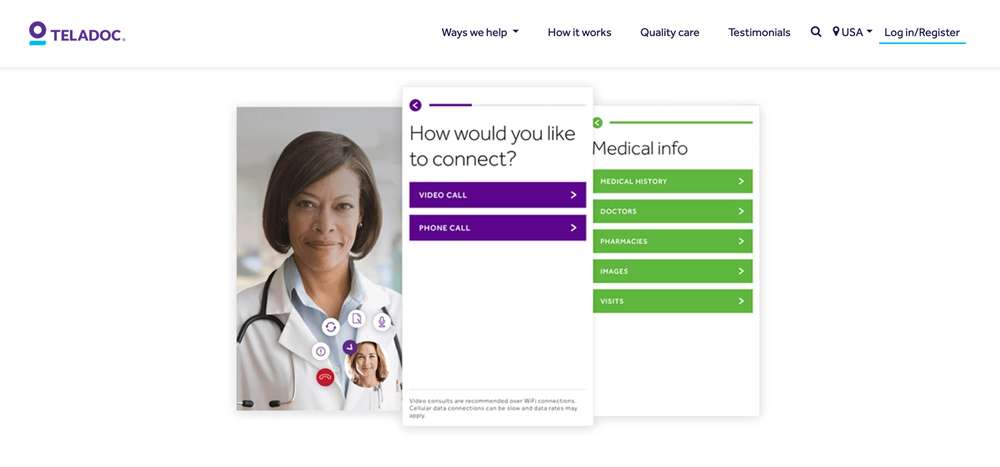
2.2 Apple COVID-19
This app was developed by Apple specifically for the COVID-19 crisis and provides users with up-to-date information from reliable sources about the disease.
Apple partnered up with the CDC, FEMA, and even the White House to offer individuals tools that can help users during the crisis, like a screening tool that guides them on what to do if they have Covid symptoms and if they’ve been in contact with those with Covid.
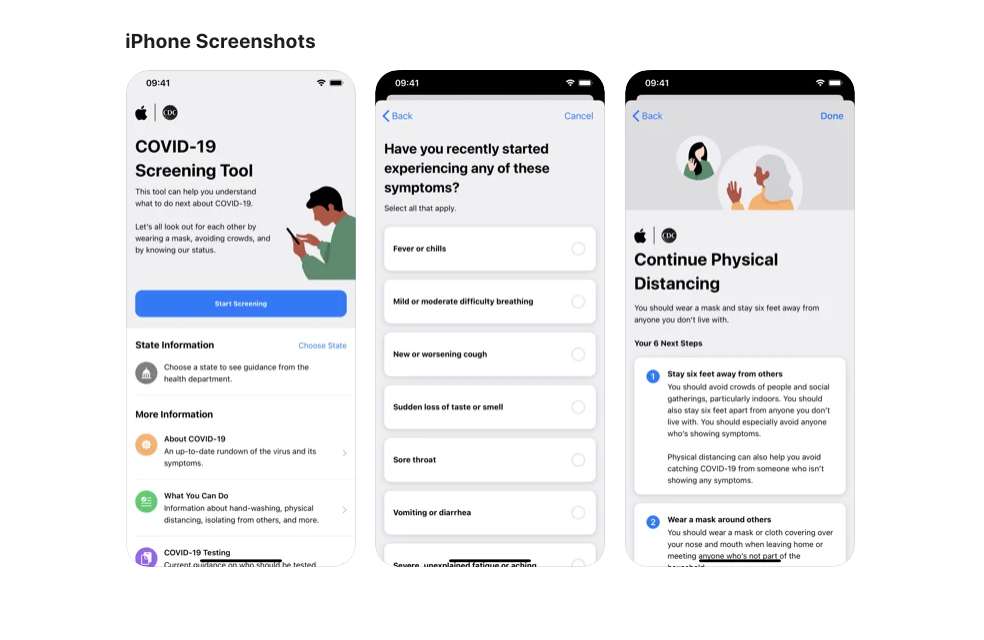
This tool will guide users on appropriate actions based on CDC current guidelines.
It also offers best practices for staying safe from infection and how to monitor your symptoms.
2.3 Doximity
Doximity is like a social network for healthcare professionals.
It’s a mobile app that lets you connect with your colleagues and access all sorts of clinical resources, like medical literature and guidelines.
It’s available on both iOS and Android devices, and while it’s popular among doctors, nurses and pharmacists use it too.
On Doximity, you can chat with other healthcare pros, make phone calls, and even manage patient care.
It’s like having a whole team of experts in your pocket.
It’s secure, so you can feel confident using it to exchange important information.
So if you’re in the healthcare industry and you want to stay connected and up-to-date, Doximity is an app doing things right.
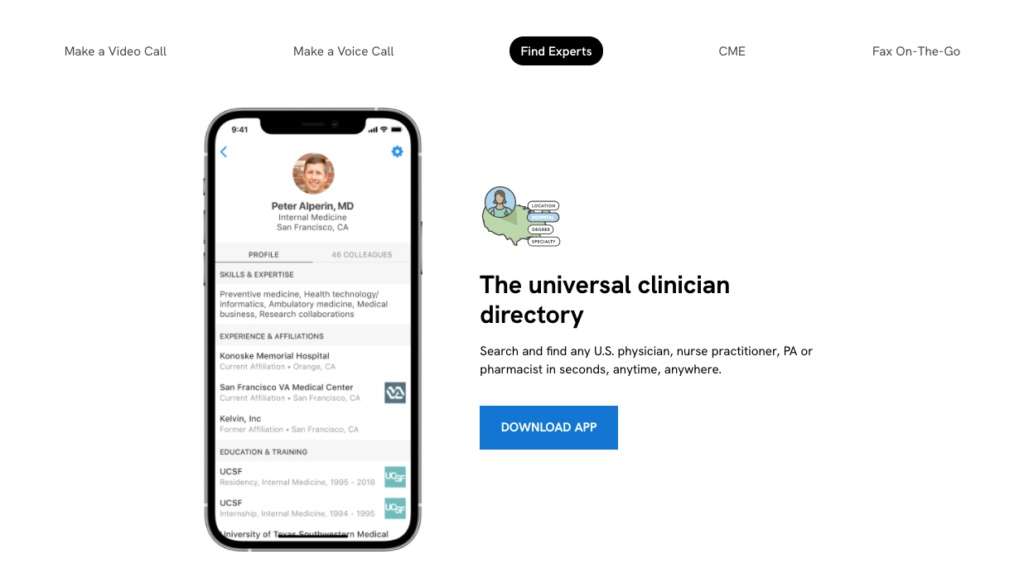
Doximity can be used to stay informed with personalized news and research in a medical speciality without having the added hassle of digging through journals and publications, which can earn users 1 Continuing Medical Education (CME) for each article read.
2.4 Visual DX
This award-winning app allows you to search the largest database of medical images for help in self-diagnosing various medical conditions.
It’s designed to help enhance diagnostic accuracy, improve patient safety, and aid in making therapeutic decisions.
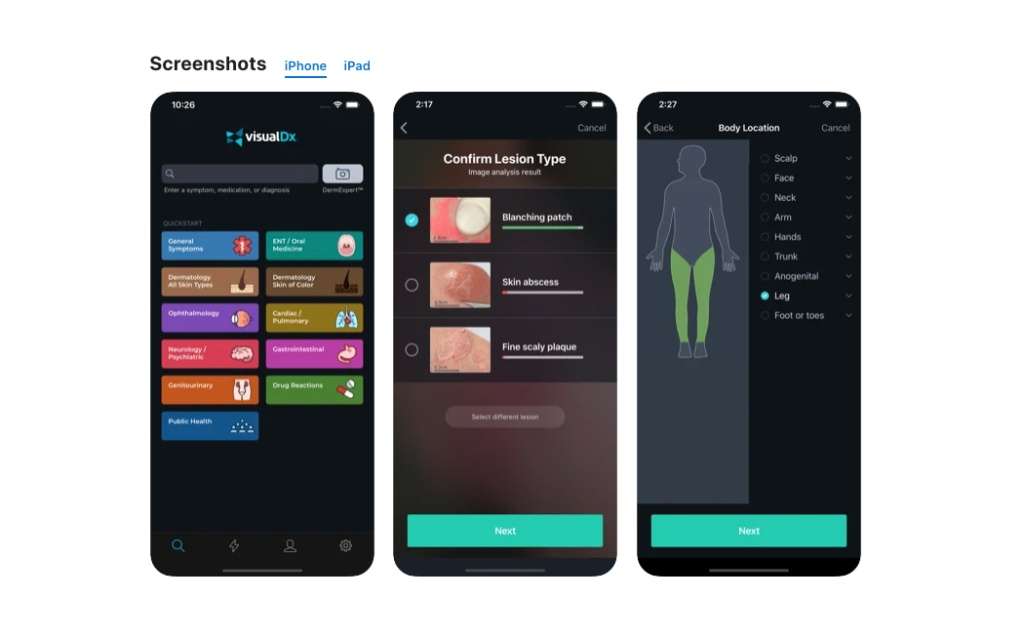
Users can search by signs, symptoms, and patient factors, making it a valuable resource for both patients and healthcare professionals.
Once diagnosis has been made, the software provides access to next steps for care and patient education.
Visual DX combines trusted medical knowledge, intelligent search, standardized terminology, and medical images to deliver accurate support in diagnosing conditions.
While the mobile app industry is a saturated one, there’s always room for innovation and new ideas.
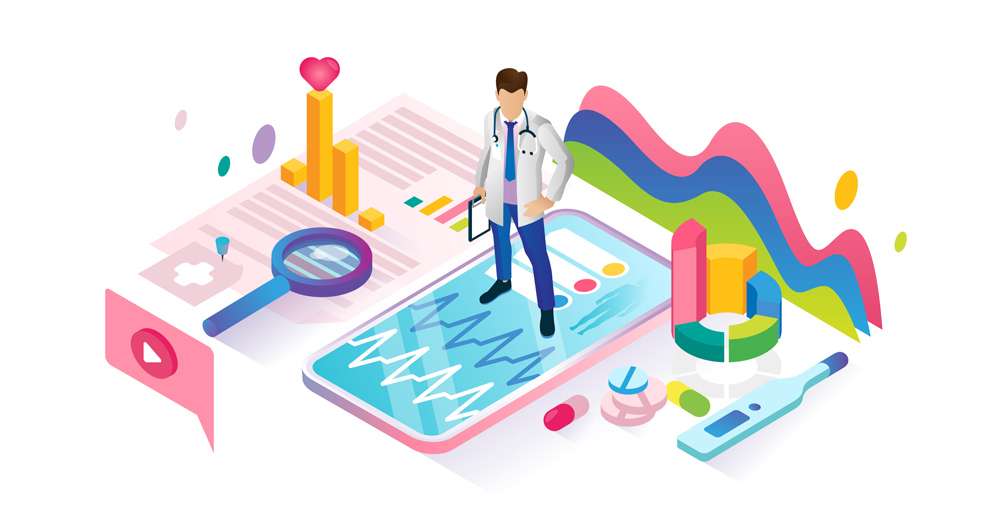
If you think you have something to bring to the table in mobile app healthcare, now is the time to get started on your app idea.
Here are the first steps to take in healthcare mobile app development.
3.1 What Type of Health App Will You Build?
If you have some ideas for a health app, think carefully about where they fit in the mobile health space.
Will your app be a diagnostics tool?
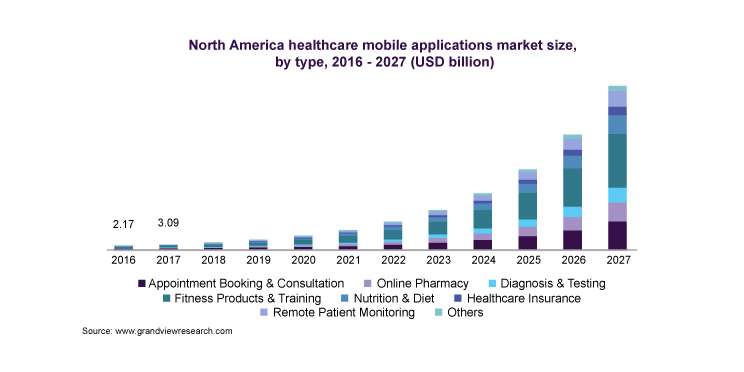
Will it help users manage their medications and treatment plans?
Or will your app focus more on virtual services, like online doctor visits?
All of these services already exist, but maybe your app is improving on them.
PRO TIP:
Analyze popular mobile health apps in the market to understand what they’re offering and where your app can fit in as a valuable solution to patients, healthcare workers, or both.
Here are a few types of mobile apps in the healthcare industry:
Clinical Assistance Apps
These types of apps give user access to electronic health and medical records, including lab results, patient charts, check-up information, and more.
Reminder and Scheduling Apps
These apps can help patients or physicians and administrators manage their appointments and prescriptions.
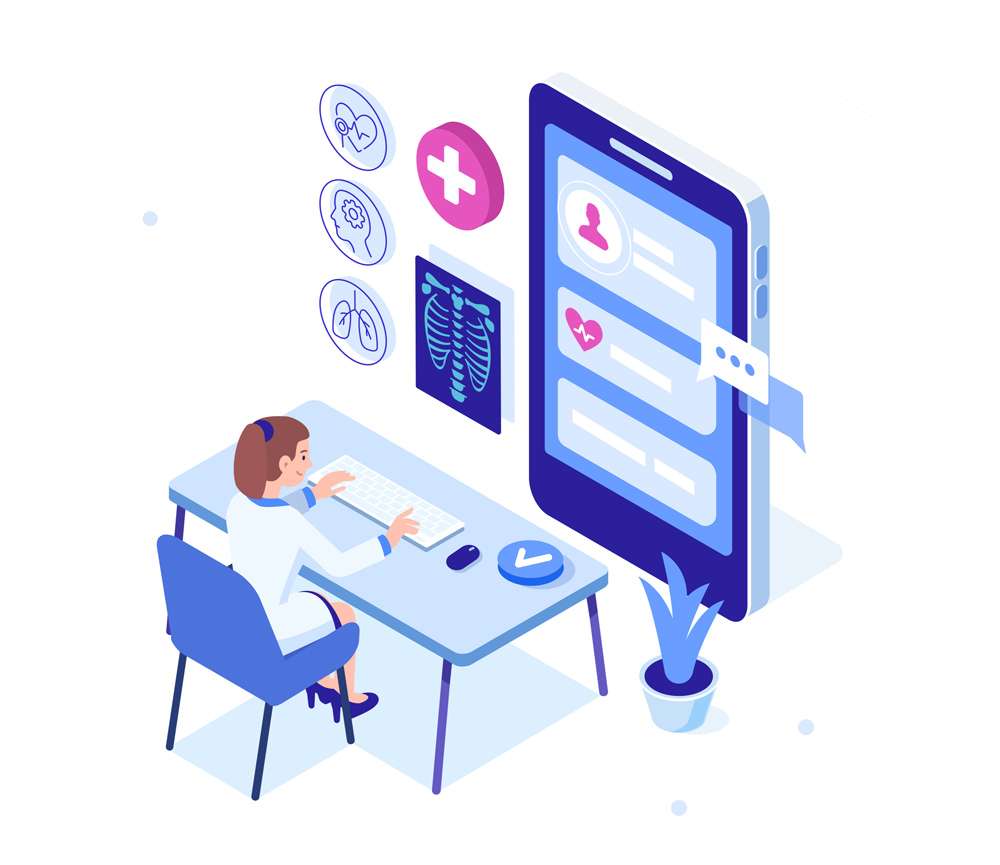
Some of these apps are geared towards medical staff, specifically, and others are geared towards patients.
Remote and Telehealth Apps
These types of apps allow remote medical services for patients from the comfort of their home, like diagnostics, virtual wellness check-ups, and more.
3.2 What Functionality and Features Will You Offer?
Once you have a better understanding of the type of health app you want to create, you can begin focusing on which functionality and features will make your app most valuable to users.
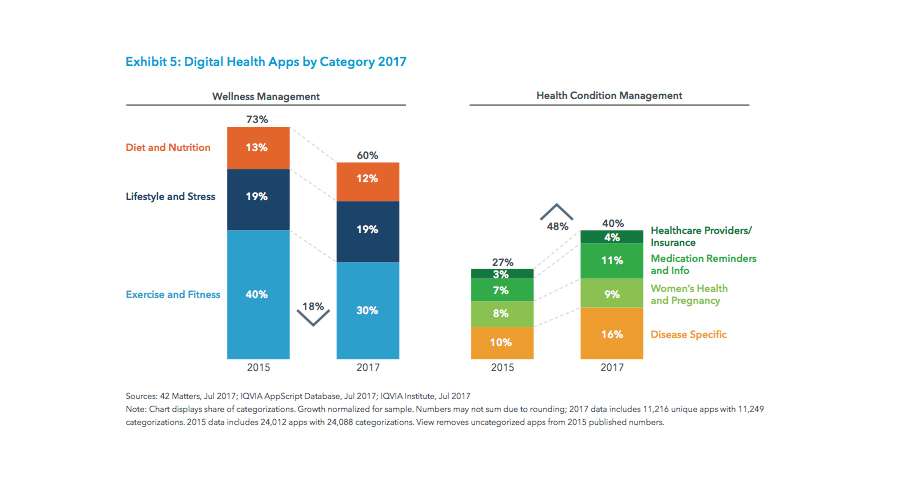
Here are some common features you’ll find in mobile health apps:
- Easy communication with healthcare professionals
- Access to medical records
- Appointment setting and management
- Medication management and reminders
- Telehealth services, like online visits
- Diagnostic tools
- Medication delivery
- Payment portal
- Patient/physician portal
- Patient community and social features
- Digital experiences for improved user experience, like enhanced data visualization
- Integration with wearable devices, like a smartwatch or health tracker
PRO TIP:
Understanding your target audience will help narrow down your list of features so you can hone in on what your users will care about most.
Remember, even if your healthcare app doesn’t have something completely new to offer, it can still succeed by improving the experience for users.
3.3 Conduct Research on Compliance and Privacy
Privacy is always important when building an app, but it’s especially crucial when it comes to building a healthcare app.
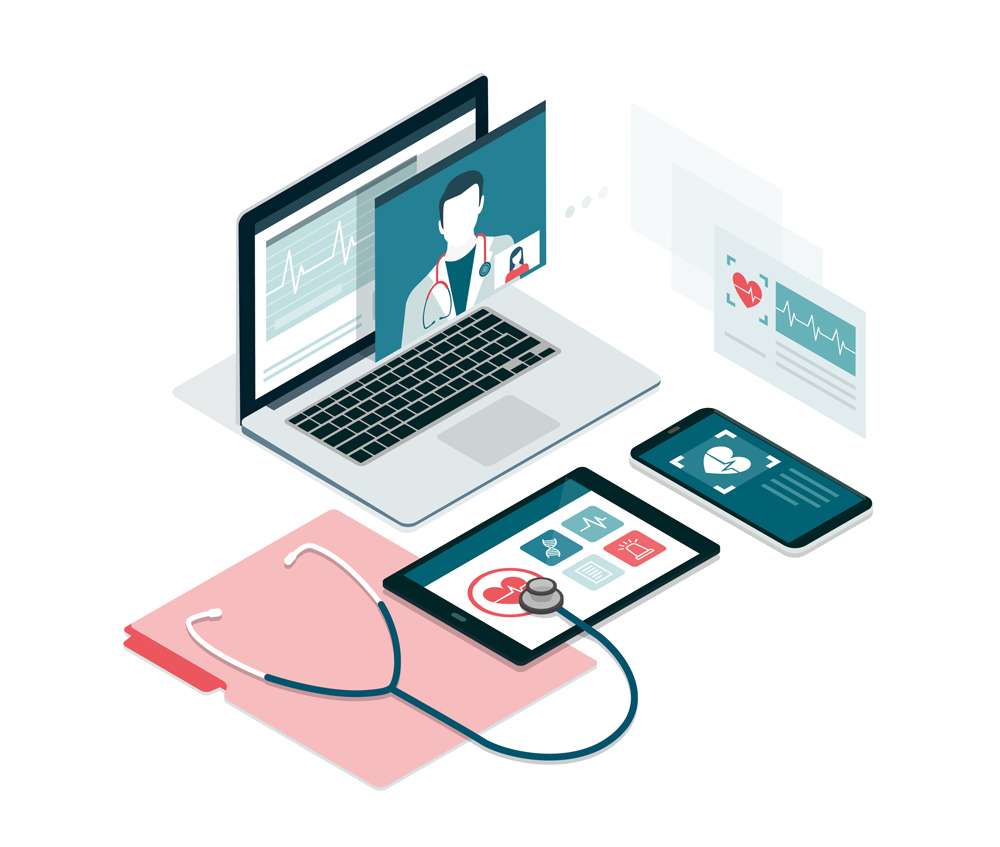
Security, digital privacy, and being HIPAA compliant is absolutely essential and you’ll need to acquire the necessary certifications that ensure patient protection.
Here’s what you’ll need to do to make your app HIPAA compliant:
- Hire a consulting expert to audit your app
- Evaluate the patient data to determine what is Protected Health Information (PHI).
- Utilize third-party solutions and infrastructures that are HIPAA compliant to save time, money, and effort.
- Use security best practices when it comes to encrypting sensitive user data.
- Test your app for security after every app update.
3.4 Ensure Your App’s UI/UX Design in Accessible
When developing a healthcare app, accessibility is also very important.
You want to ensure all users are able to complete any task in the app with ease.
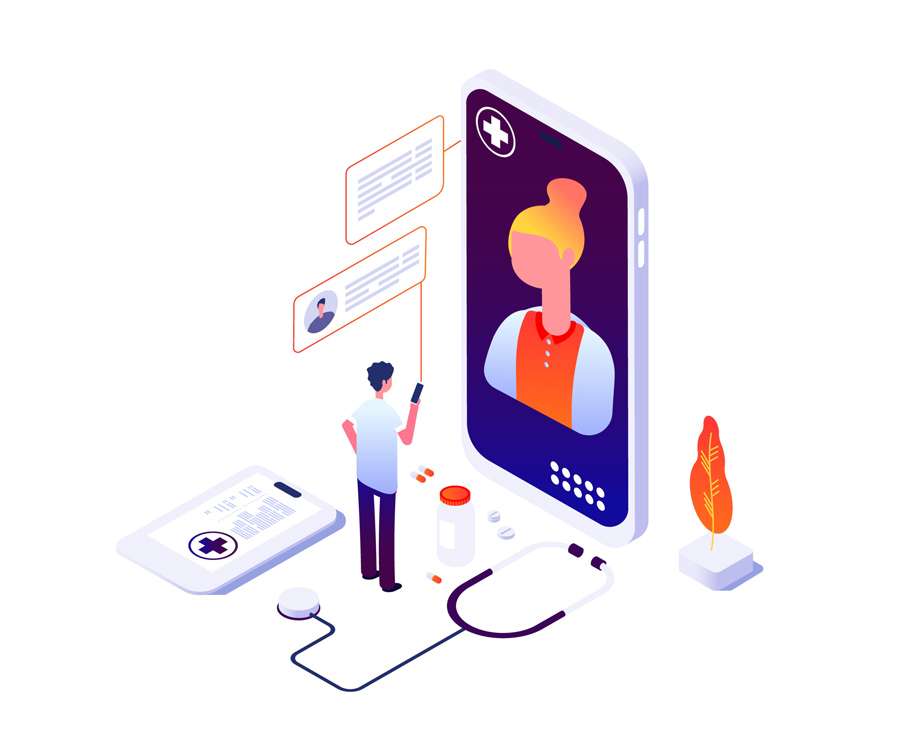
Here are a few tips to creating a good user experience:
- Keep your app design and architecture consistent.
- Do research on your users’ pain points to ensure you’re providing a seamless experience.
- Minimize the amount of interaction between users and the app.
- Keep your design simple, clean, and uncluttered.
3.5 Pick a Platform
Developing a healthcare mobile app won’t come cheap, especially when you factor in the cost to bring in third-party experts and solutions to ensure your app is secure and HIPAA compliant.
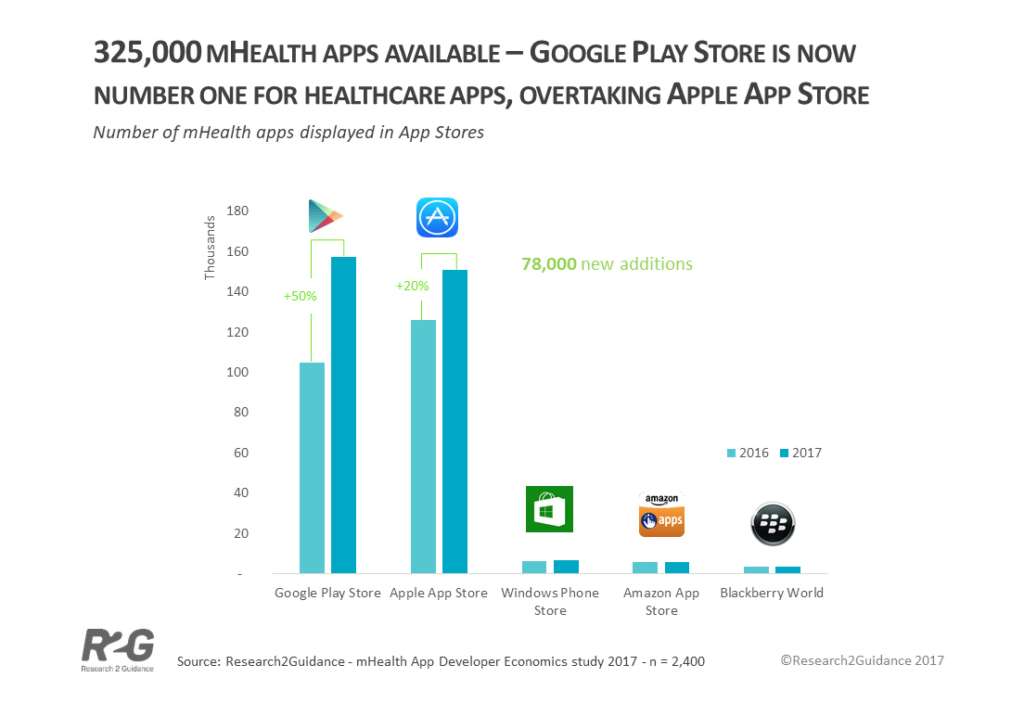
While offering your app on every platform and device will guarantee a wider reach, ask yourself first if that’s really necessary.
Every platform and device has a user base. Which ones are your target audience using most?
PRO TIP:
Users will often prefer one platform over the other, so take time to do research on who your users are so you don’t waste time and money developing an app for multiple platforms and devices.
Building a healthcare mobile app can be not only a rewarding experience by providing important solutions to those who need it, but it can also be a lucrative investment.
Bring value to your users by developing an app that’s secure, easy to use, and focuses on a core set of features.
Planning every detail of your app will keep you on track and on budget, but it’s one of the hardest parts when creating an app.
Let us do the heavy-lifting with our Simple Starter package that involves three steps that will increase your project success rate:
- A technical writeup that takes your idea and turns it into a blueprint
- Wireframe sketching so you can see how your app will look and function
- Target user analysis to discover who your users are
Have you built a healthcare app before? What tools and resources helped you in your journey?




